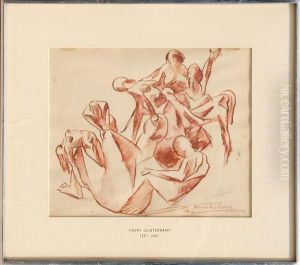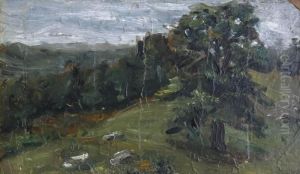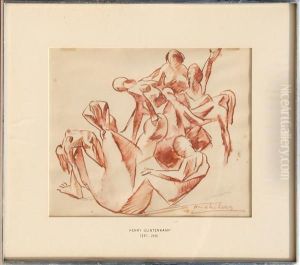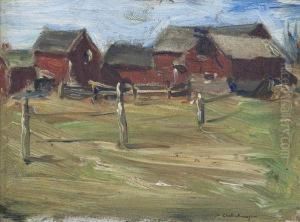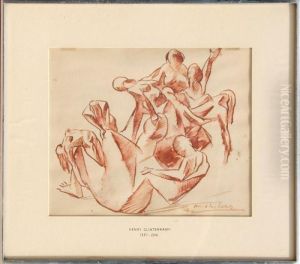Henry Glintenkamp Paintings
Henry Joseph Glintenkamp, an American artist known for his works in painting, drawing, and printmaking, was born on August 18, 1887, in Augusta, New Jersey. He developed an interest in art at a young age and pursued his passion through formal education. Glintenkamp studied at the National Academy of Design in New York and later, at the Art Students League under the tutelage of esteemed artists such as Kenneth Hayes Miller and John French Sloan, who were part of the Ashcan School—a movement that portrayed scenes of daily life in New York City with realistic and unvarnished veracity.
Glintenkamp's body of work was heavily influenced by his socio-political views. He was an active participant in the early 20th-century social and political movements, which is reflected in his art. His illustrations and prints often depicted the harsh realities of life and were characterized by a strong use of line and a dynamic, almost expressionistic style. During World War I, Glintenkamp, like many of his contemporaries, faced scrutiny for his pacifist stance. His involvement with The Masses, a socialist magazine known for its advocacy of progressive causes, led to legal issues under the Espionage Act. In 1917, Glintenkamp, along with other staff members from The Masses, was indicted but not convicted.
After the trial, Glintenkamp left the United States for Mexico, where he was influenced by the Mexican muralist movement and artists like Diego Rivera. His experiences in Mexico further shaped his style and his thematic focus on social justice and anti-imperialist sentiments. Upon his return to the United States, Glintenkamp continued to work and exhibit, though he never achieved the same level of fame as some of his contemporaries.
Henry J. Glintenkamp's career was also marked by his teaching roles, including a position at the New School for Social Research in New York City. He was also a member of the Society of Independent Artists and contributed to various publications with his illustrations. Glintenkamp's legacy is that of a socially engaged artist who captured the tumult of the early 20th century with a critical eye and a compassionate heart.
Glintenkamp passed away on September 22, 1946, in Cuernavaca, Mexico. His works are part of various collections, including the Smithsonian American Art Museum and the Metropolitan Museum of Art, but perhaps more importantly, they remain a testament to the power of art as a tool for social commentary and change.
